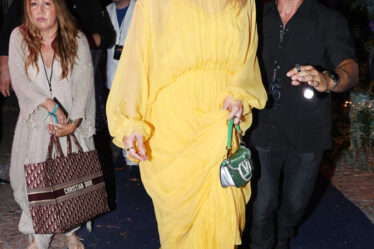
In the world of high-end fashion, where style reigns supreme, there’s a fresh trend captivating fashionistas’ attention – one that transcends aesthetics and prioritizes environmental consciousness. As awareness of sustainability grows worldwide, fashion labels are recognizing the importance of using eco-friendly packaging to enhance their appeal and connect with environmentally conscious consumers.
A subtle shift is occurring in the industry, urging everyone from the prestigious runways of Paris to the bustling streets of New York to embrace a new era of luxury that’s mindful of its impact. Leading this movement are fashion brands that seamlessly integrate sustainability into their identity, earning them a respected position among modern style trendsetters.
Elevating Brand Sophistication
Fashion firms have an opportunity to become more sophisticated and project an opulent yet environmentally conscious brand image by utilizing sustainable packaging. Fashion houses may create a multi-sensory experience that captivates consumers from the moment they lay eyes on the packaging by carefully selecting packaging materials and designs that complement their brand’s image.
Sleek, minimalist designs that radiate sophistication and refinement can be created with cutting-edge materials like organic textiles, plant-based polymers, recycled or biodegradable papers, and refined or recycled paper. In addition to increasing the product’s perceived value, this consistent brand experience demonstrates the brand’s dedication to sustainability and helps it stand out in a very competitive market.
Aligning with Conscientious Consumers
Customers are choosing businesses with an emphasis on environmental responsibility more often in today’s consumerism scene, where social consciousness is growing. Fashion labels can demonstrate their commitment to ethical standards by strategically choosing sustainable packaging supplies. They use it as a means of demonstrating to a growingly aware population that they are dedicated to having a beneficial environmental impact.
These sophisticated buyers are searching for brands that align with their own beliefs, especially concerning ethics and the environment, in addition to stylish and well-made goods. Sustainable packaging is an outward manifestation of a company’s efforts to reduce its carbon footprint and make a beneficial impact on the environment. For a considerable number of customers, the knowledge that the company they endorse is dedicated to ethical business practices enhances their whole purchasing experience.
By integrating sustainable packaging into their operations, fashion brands not only demonstrate their environmental consciousness but also establish a deeper connection with their audience. It’s a strategic decision that resonates with consumers who prioritize sustainability and encourages brand loyalty by aligning with their ethical beliefs. In this way, sustainable packaging becomes not just a practical solution but a powerful tool for brands to communicate their values and forge stronger connections with their customers.
Storytelling and Brand Narrative
Fashion is an art form that goes beyond just clothing; it’s a tapestry made of cultural histories, stories, and feelings. Fashion firms can use sustainable packaging as a powerful medium to tell their own story and engage consumers with a captivating brand narrative.
Through the integration of sustainable components like recycled materials, eco-friendly inks, or packaging with embedded seeds, marketers can craft an aesthetically captivating and captivating experience that strikes a deeper chord with consumers. This narrative strategy not only increases brand loyalty but also elevates the brand’s chic factor by positioning it as a leader in environmental practices. Below are some of the examples of sustainability techniques that brands utilize to improve their narrative and boost their positive environmental impact.
| Method of Integration | How it Adds to Brand Narrative | Environmental Impact |
| Use of Recycled Materials | Demonstrates commitment to sustainability; portrays the brand as environmentally conscious and forward-thinking. | Reduces the demand for virgin materials, minimizes waste, and conserves natural resources. |
| Biodegradable Packaging | Positions brand as eco-friendly and responsible; aligns with consumer values of reducing environmental impact. | Breaks down naturally over time, reducing the accumulation of non-biodegradable waste in landfills and ecosystems. |
| Minimalist Packaging Design | Reflects the brand’s ethos of simplicity and elegance; communicates a message of less waste and environmental mindfulness. | Reduces the amount of packaging materials used, leading to less waste generation and a lower environmental footprint. |
| Packaging Reusability | Enhances the brand’s image as innovative and resourceful; encourages consumer engagement and loyalty through sustainable practices. | Extends the lifespan of packaging materials, reducing the need for single-use packaging and minimizing waste production. |
| Sustainable Sourcing Practices | Strengthens the brand’s narrative of ethical production; emphasizes commitment to environmental and social responsibility. | Promotes responsible management of natural resources, supports sustainable livelihoods, and protects ecosystems and biodiversity. |
| Carbon-Neutral Packaging | Highlights the brand’s dedication to offsetting its environmental impact; reinforces a message of climate consciousness and accountability. | Helps mitigate greenhouse gas emissions associated with packaging production and transportation, contributing to climate change mitigation efforts. |
Social Media Engagement and Influencer Marketing
Social media and influencer marketing are now essential tools for fashion firms in the digital era to engage with their target market and establish their brand identity. Sustainable packaging may be a potent trigger when it comes to creating excitement and encouraging interaction across many media.
Sustainable packaging designs that are visually arresting and unique have the potential to become social media phenomena, as customers are eager to share their unpacking experiences and highlight the brand’s dedication to sustainability. Fashion firms may increase the reach of their message and encourage a chain reaction of environmentally aware decisions among their followers by using influencer marketing initiatives.
Reducing Environmental Impact
Ultimately, embracing sustainable packaging is not merely a branding exercise but a genuine commitment to reducing a fashion brand’s environmental impact. By transitioning to eco-friendly materials and responsible sourcing practices, brands can significantly lower their carbon footprint, conserve natural resources, and minimize waste throughout their supply chain.
This tangible contribution to environmental preservation not only resonates with conscious consumers but also positions the brand as a leader in sustainable practices within the industry. As the fashion world continues to grapple with its environmental impact, brands that prioritize sustainable packaging will be at the forefront of this transformation, earning them the respect and admiration of a discerning and eco-conscious audience.
The Chic Future of Fashion
As the fashion industry navigates the evolving landscape of consumer preferences and environmental challenges, sustainable packaging has emerged as a powerful tool to elevate the brand image and foster a more responsible and chic culture. By embracing innovative materials, captivating storytelling, and a genuine commitment to reducing their environmental footprint, fashion brands can not only captivate their audience but also contribute to a more sustainable future for the industry and the planet.
Conclusion
In this era of conscious consumerism, the brands that seamlessly integrate sustainability into their brand narrative and packaging will be the true trendsetters, setting a new standard for luxury and sophistication. As the world embraces a more mindful approach to fashion, sustainable packaging will undoubtedly become a hallmark of chic culture, a testament to the industry’s ability to adapt and lead the charge toward a more sustainable and stylish future.
Frequently Asked Questions (FAQs)
Q: How does sustainable packaging align fashion brands with conscientious consumers?
A: By embracing eco-friendly packaging solutions, fashion brands demonstrate their commitment to environmental stewardship, resonating with the growing demographic of shoppers who prioritize responsible and ethical practices. This alignment with conscientious consumers builds brand loyalty and trust.
Q: In what ways can sustainable packaging elevate a fashion brand’s sophistication?
A: Sustainable packaging allows fashion brands to curate a luxurious and refined brand experience by utilizing innovative materials like recycled paper, plant-based plastics, and organic textiles. These materials can be crafted into sleek, minimalist designs that exude sophistication while reflecting the brand’s eco-conscious values.
Q: How can sustainable packaging enhance social media engagement for fashion brands?
A: Unique and visually striking sustainable packaging designs can generate significant buzz on
social media platforms. Consumers are eager to share unboxing experiences showcasing the brand’s commitment to sustainability. Fashion brands can leverage this engagement through influencer marketing campaigns, amplifying their eco-friendly message.
More resources:
Iskra Banović is our seasoned Editor-in-Chief at Blufashion. She has been steering the website’s content and editorial direction since 2018. With a rich background in fashion design, Iskra’s expertise spans across fashion, interior design, beauty, lifestyle, travel, and culture.




